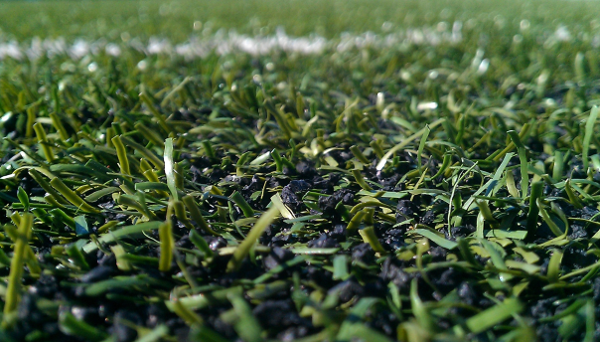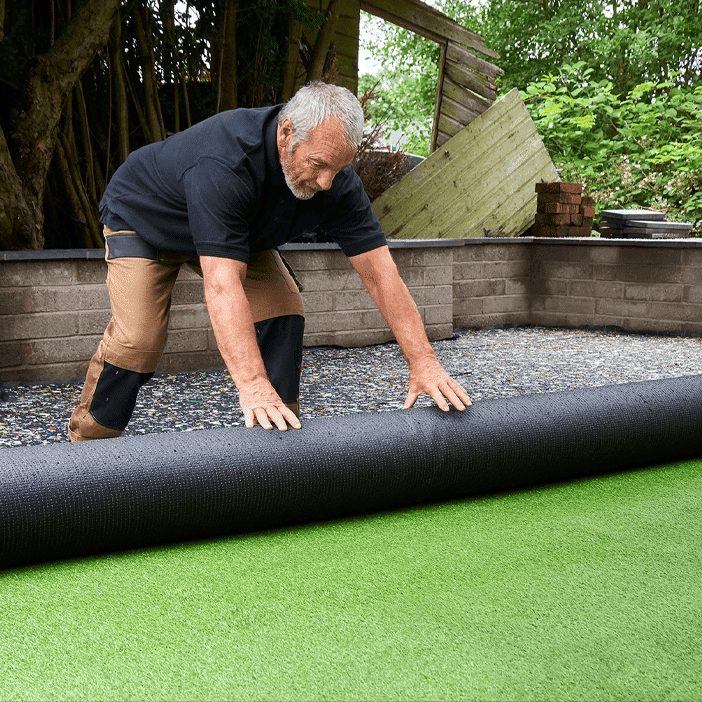Premium Arizona Turf Options for a Beautiful and Lush Landscape
Premium Arizona Turf Options for a Beautiful and Lush Landscape
Blog Article
Delve Into the Environmental Benefits of Opting for Artificial Lawn Solutions
The fostering of synthetic grass options provides a compelling chance to attend to pushing ecological obstacles. By dramatically lowering water usage and minimizing the application of dangerous chemicals, these options not only advertise sustainable landscape design however also protect neighborhood ecological communities. The lower carbon footprint connected with lowered maintenance tasks adds to a much more sustainable strategy to land administration. Nonetheless, the effects of these benefits prolong past simple conservation initiatives, raising inquiries about their lasting effect on habitat preservation and total ecological balance. Exploring these dimensions exposes a complex interplay worth considering.
Water Preservation Benefits
One of the most considerable advantages of artificial lawn is its capacity to preserve water. In contrast, artificial lawn does not require watering, substantially minimizing the overall need for water sources.
By removing the requirement for regular watering, artificial grass adds to sustainable landscape techniques and helps minimize the environmental influence of excessive water usage. Additionally, the conservation of water prolongs to the decrease of runoff, which can cause soil erosion and river pollution.
Furthermore, the installation of artificial lawn allows towns and home owners to designate water sources more effectively, concentrating on important uses such as alcohol consumption water and farming. The shift in the direction of artificial lawn not just promotes accountable water use however also aligns with wider environmental goals focused on preserving natural deposits.
As neighborhoods significantly focus on sustainability, the water preservation advantages of artificial grass present a compelling situation for its adoption in commercial and residential landscaping projects.
Lowered Chemical Usage
The shift to synthetic grass dramatically lowers the dependence on chemical therapies generally made use of in all-natural lawn upkeep. Standard grass administration typically includes the application of herbicides, chemicals, and plant foods to advertise growth and control parasites. These chemicals can pose risks to human health and wellness, local wildlife, and the environment, adding to dirt and water contamination.
In contrast, man-made turf gets rid of the need for these unsafe compounds. By minimizing the release of artificial substances right into the community, artificial grass promotes healthier dirt and water systems.
Moreover, the absence of chemical drainage related to synthetic grass installments helps safeguard local waterways from pollution, sustaining aquatic life and preserving biodiversity. Phoenix turf companies. As communities significantly prioritize sustainable methods, choosing synthetic grass presents a feasible remedy that aligns with environmental preservation objectives. Via this change, homeowner can delight in rich environment-friendly areas without jeopardizing eco-friendly wellness, leading the way for a much more lasting future
Reduced Carbon Impact

In addition, the installation of synthetic grass can lead to substantial water conservation. Natural yards call for substantial amounts of water for irrigation, which not only includes to the carbon impact linked with water extraction and treatment however likewise stress regional water sources. In comparison, synthetic lawn needs websites marginal upkeep, calling for no watering, consequently significantly reducing water use and its associated energy prices.
In addition, the long life of artificial turf adds to its lower carbon influence. With a life-span of as much as 15 years or even more, the need for regular replacements is decreased, resulting in much less waste and reduced power usage in manufacturing and taking care of traditional yard choices. On the whole, fabricated turf presents a sustainable alternative for eco aware landscaping.
Habitat Preservation
Environment preservation is a vital consideration in the dispute over landscape design options, particularly when contrasting fabricated turf to natural turf. All-natural lawn lawns usually call for substantial maintenance, consisting of making use of plant foods, herbicides, and pesticides, which can detrimentally affect regional environments. These chemicals can leach right into the dirt and rivers, harming indigenous plants and animals and interrupting local environments.
On the other hand, synthetic grass offers a chance to reduce the eco-friendly footprint of landscape design. By selecting artificial turf, house owners can minimize the interruption of all-natural environments related to conventional yard treatment practices. Synthetic grass eliminates the need for unsafe chemicals, therefore securing nearby wildlife and keeping the honesty of bordering ecosystems. The linked here installment of synthetic grass can lead to the conversion of previous yard areas right into more biodiverse landscapes, such as pollinator gardens or native plant areas, which can sustain regional wildlife.
Eventually, the transition to fabricated lawn not just saves water and decreases maintenance efforts however likewise fosters a more unified connection in between human tasks and the natural atmosphere, advertising habitat preservation while doing so.
Long-Term Sustainability
Lasting sustainability is a vital aspect in assessing the benefits of synthetic grass over standard lawn yards. Among the most significant advantages of man-made grass is its sturdiness; it can last as much as 15-20 years with very little maintenance, whereas all-natural turf calls for constant reseeding and substitute. This longevity lowers the requirement for constant sources, such as water, plant foods, and pesticides, which are vital for maintaining a healthy and balanced grass lawn.
In addition, fabricated grass adds to a reduction in carbon emissions linked with yard treatment devices. Traditional lawns often need gas-powered mowers, leaners, and blowers, every one of which add to air pollution. Arizona turf. In comparison, synthetic grass gets rid of the demand for such devices, advertising a cleaner environment
Additionally, the production of synthetic grass significantly utilizes recycled products, boosting its sustainability profile. As suppliers embrace eco-friendly methods, the ecological footprint of artificial grass proceeds to lessen.

Final Thought
The adoption of synthetic grass services presents substantial environmental advantages, consisting of substantial water preservation, decreased dependence on damaging chemicals, and a lower carbon impact. Additionally, artificial lawn aids in preserving all-natural habitats by lessening land disturbance and promoting long-lasting sustainability through the usage of durable products. Jointly, these variables underscore the capacity of artificial grass to add positively to ecological health and provide a viable option to typical landscaping techniques in a progressively resource-conscious globe.
In comparison, synthetic turf does not need watering, dramatically decreasing the general need for water click reference sources. By minimizing the release of artificial substances into the environment, fabricated grass advertises much healthier soil and water systems.
Additionally, the installment of artificial grass can result in significant water conservation. In comparison, man-made lawn needs very little upkeep, calling for no watering, therefore significantly decreasing water usage and its linked power expenses.

Report this page